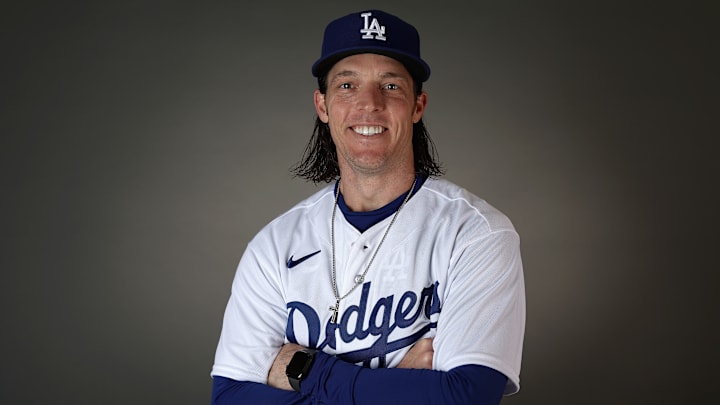The Atlanta Braves circling Danny Lehmann should feel like a fire alarm for the San Diego Padres. If Atlanta, a club already known for tight game planning and clean in-game processes, is trying to pry away the Dodgers’ bench coach, they’re not shopping for a No. 2; they’re recruiting a systems architect to run the show. Lehmann’s value isn’t a mysterious aura; it’s the repeatable edge Los Angeles has built by marrying data, communication, and preparation so well that the “right” move often looks obvious in real time. If the Padres want to run with the NL’s best, this is the moment to stop treating analytics as a toolbox and start treating it as an operating system.
Because that’s Lehmann’s calling card: operating system-level impact. He rose from advance video scout to game planning and communications (2018–22) to bench coach under Dave Roberts, and at every step his influence sat at the intersection of information and action. That role is less about spreadsheets and more about translation, turning noise into signal, then turning signal into plans players trust. L.A. entrusted him to fill in for Roberts when needed, which tells you everything about how the organization views his judgment and his command of process under pressure.
Padres can leap ahead analytically amid Braves push for Danny Lehmann
From the Braves’ vantage point, the appeal is obvious. Lehmann brings an embedded understanding of how the Dodgers prepare, opponent-specific plans, player positioning, swing/approach coaching cues that actually stick, bullpen mapping that anticipates game states instead of reacting to them. He’s not just another smart coach; he’s institutional knowledge in cleats. If Atlanta lands him, they’re buying scarcer capital than cap space: the know-how to keep small decisions from turning into big problems over 162 and into October.
From the Padres’ vantage point, this is a mirror. San Diego has used advanced tools, Rapsodo, Edgertronic, biomechanical partnerships, and they’re not anti-data. But “having data” isn’t the edge; integrating it is. Over the last few seasons, the club has lived in the gray space between intent and execution.
Internal debates over how much to lean on models, how prescriptive to be with players, and how to balance scout feel with probabilistic planning have created friction, and that friction has occasionally shown up on the field as inconsistent approaches and late-game wobble.
The Shildt hire didn’t help the perception. Fair or not, the post–Bob Melvin pivot dented the narrative that San Diego sat on the “cutting edge.” Again: not because Shildt is anti-analytics, but because the move signaled comfort with a more traditional approach at precisely the moment when rivals are sprinting deeper into process. The takeaway isn’t that San Diego doesn’t use data; it’s that rivals believe they can out-execute the Padres at the handoff. The split second where a plan becomes a swing decision, a positioning card becomes an out, or a bullpen map becomes a win.
What a Lehmann-type coach represents, and what the Braves are telegraphing they value, is that handoff. In L.A., Lehmann helped build the connective tissue: opponent-specific plans that players can repeat, in-game communication that travels from the tablet to the dugout to the box to the pitch, and an org-wide comfort with changing course when the live data says so.
That last part matters. The cutting edge isn’t the pregame deck; it’s the willingness and fluency to update the deck at 8:47 p.m. because the shape of the game changed.
So what does “embrace a data-driven edge” actually mean for San Diego? It’s not just a buzzword; it’s a blueprint. Elevate a game-planning czar (title it however you want) who owns the translation layer from R&D to dugout. Build clear feedback loops so hitters know why an approach is changing mid-series and pitchers understand how their shapes play vs. tonight’s lineup. Treat the new biomechanics investment as a coaching language, not a lab report, turn it into one or two simple cues per player that surface daily. And align the front office and field staff around pre-defined, opponent-specific bullpen contingencies so the sixth doesn’t keep bleeding while everyone argues about the seventh.
Making the most of this window with moves the Padres can deploy now
This is also where institutional continuity matters. Lehmann has nearly a decade of Dodger process in his head; the Padres need to create their own institutional memory, codified, durable, and independent of any one staffer. That looks like shared templates for series plans, standard “if/then” menus for late-game states, and a common dictionary so hitting, pitching, and analytics speak the same five verbs. The aim isn’t to turn players into robots; it’s to free them from decision fatigue by making the next right choice feel familiar.
San Diego has some of these ingredients. They’ve shown they can identify talent, they’ve invested in tech, and they’ve tasted October. But the NL’s current power structure, Dodgers entrenched, Braves looking to rebound depending on health, won’t be disrupted by vibes. It will be disrupted by an organization that turns information into certainty faster than everyone else. That’s the arms race Atlanta just entered by chasing Lehmann.
Which is why this moment should be clarifying for the Padres. If the Braves land the Dodgers’ bench coach, Atlanta gets a shortcut to someone else’s advantage. If they don’t, they still revealed the market’s priorities.
Either way, San Diego’s path is the same: close the translation gap, professionalize the handoff, and make “data-driven edge” more than a headline.
